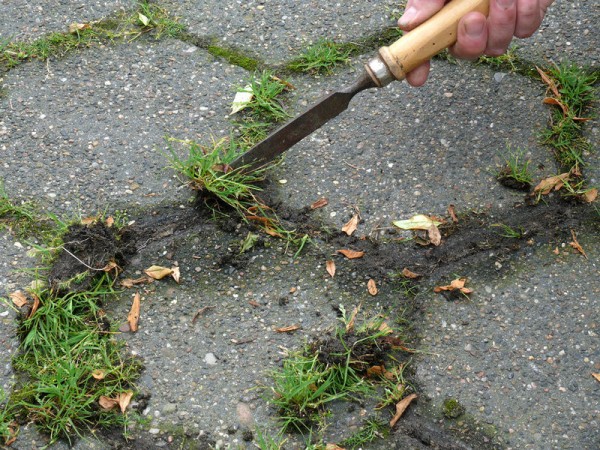Paving is a common part of our house’s exterior and they can be made very attractive. In this case, we should make sure that the paving doesn’t suffer from weathering. Improperly maintained pavement could be plagued with weeds and mold. Pavement can be made from different material, but mostly natural stone, concrete and clay. Standard bricks can also be used as affordable materials for making pavement and they can absorb moisture properly. However, it is important that pavement that’s made from brick isn’t covered with too many shady areas, because weed and mould may grow more easily. Pavement with greenish mold can be somewhat dangerous because it is slippery, especially when wet.
If we are living in an area with some very wet months, it is better to choose pavements made from granite, basal, sandstone and limestone, because they absorb very little moisture and very dense. However, we should make sure to avoid choosing porous, poor quality sandstone. We may choose clay pavers that are fired at very high temperature, so it won’t be affected by mold and growth of small vegetation. It should be noted that concrete pavement can be stained when exposed by moisture for a long period of time. Unfortunately, it is very difficult to fully restore stained concrete pavement. Pavers have different shapes and this could determine whether weed could grow easily or not.
As an example, brick with rounded edges could have depressions and large gaps that trap weed. If we want to reduce growth of vegetation, it is a good idea to choose pavers with sharp, precise edges. We should be aware that maintenance can be a big concern, so it is important to consider maintenance factors. As an example, if we have growth of weed, we should make sure that it doesn’t come from below, which can be more difficult to handle. We should be able to easily remove mold on the surface, but weeds can be more difficult to eliminate, because they have roots.
If we don’t want to use the toxic herbicide, we could boil plenty of hot water and pour on patch of vegetation on our pavement. We may need to repeat this, if we miss some of the weeds. Unfortunately, some of the mold could have penetrated of deeper to the pavement and scrubbing the surface is far from enough. In this case, we could use granulated pool chlorine, by spreading it on the affected areas. Use the hose spray to dissolve the granules and use just enough water to let it dissolve.
For the time being, our pavement could smell like a swimming pool and it is important to prevent kids and pets from walking on it. In this case, chlorine should soak into the pavement and kill all traces of the mold. Depending on our location, we may need to perform one or two chlorine treatments for our pavement. This could work on pavement made from old house bricks, especially because mold is likely to grow on them.


